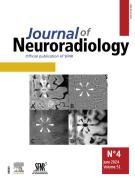Leveraging artificial intelligence in ischemic stroke imaging - 18/06/22
 , Joshua D. Bernstock b
, Joshua D. Bernstock b  , Amir Shafaat c
, Amir Shafaat c  , Vivek S. Yedavalli a
, Vivek S. Yedavalli a  , Galal Elsayed d
, Galal Elsayed d  , Saksham Gupta b
, Saksham Gupta b  , Ehsan Sotoudeh e
, Ehsan Sotoudeh e  , Haris I. Sair a, f
, Haris I. Sair a, f  , David M. Yousem a
, David M. Yousem a  , Houman Sotoudeh g, ⁎
, Houman Sotoudeh g, ⁎ 
Abstract |
Artificial intelligence (AI) is having a disruptive and transformative effect on clinical medicine. Prompt clinical diagnosis and imaging are critical for minimizing the morbidity and mortality associated with ischemic strokes. Clinicians must understand the current strengths and limitations of AI to provide optimal patient care. Ischemic stroke is one of the medical fields that have been extensively evaluated by artificial intelligence. Presented herein is a review of artificial intelligence applied to clinical management of stroke, geared toward clinicians. In this review, we explain the basic concept of AI and machine learning. This review is without coding and mathematical details and targets the clinicians involved in stroke management without any computer or mathematics’ background. Here the AI application in ischemic stroke is summarized and classified into stroke imaging (automated diagnosis of brain infarction, automated ASPECT score calculation, infarction segmentation), prognosis prediction, and patients’ selection for treatment.
El texto completo de este artículo está disponible en PDF.Abbreviations : AI, rtPA, ML, SVM, ANN, CNN, RF, GBM, DT, XGB, ASPECT, MCA, DWI, AUC, LVO, MLP, kNN, PPV, NPV, ATLAS, 3D, mRS, ICH, pCASL, ROC, rs-fMRI, ASTRAL, THRIVE, SVM+PCA, NB, LR, DNN, fMRI, RFNN, AE, DTI, FLAIR
Keywords : Stroke, Brain ischemia, Artificial intelligence, Machine learning, Neural network
Esquema
Vol 49 - N° 4
P. 343-351 - juin 2022 Regresar al númeroBienvenido a EM-consulte, la referencia de los profesionales de la salud.
El acceso al texto completo de este artículo requiere una suscripción.
¿Ya suscrito a @@106933@@ revista ?

